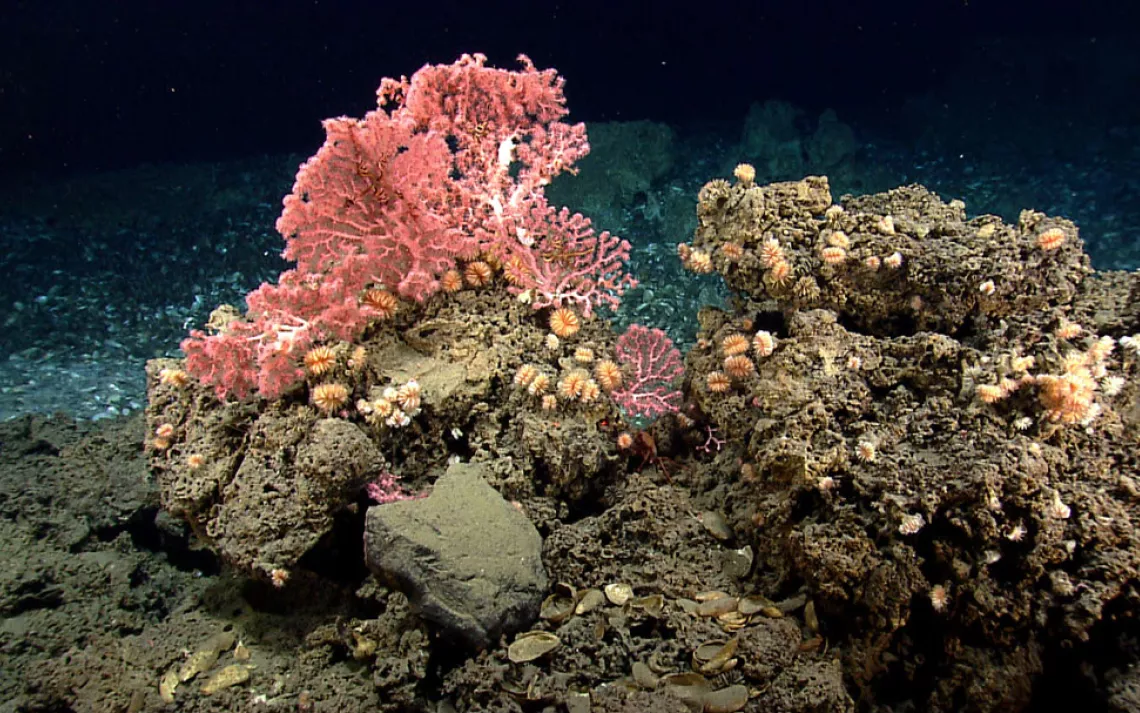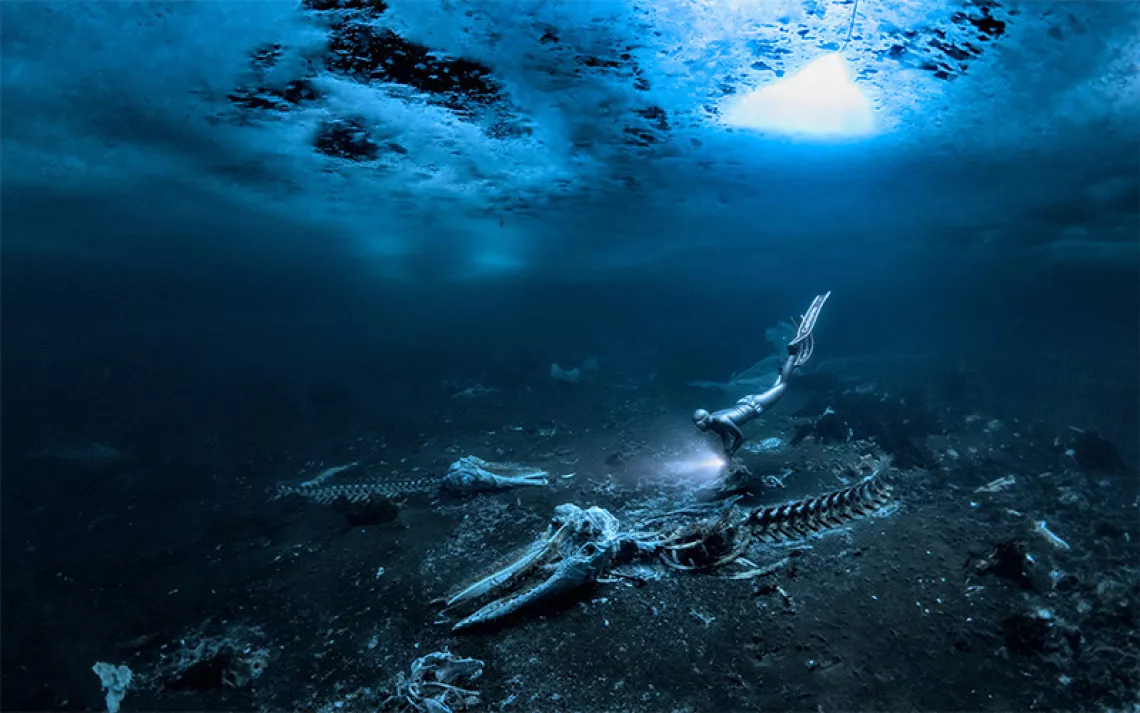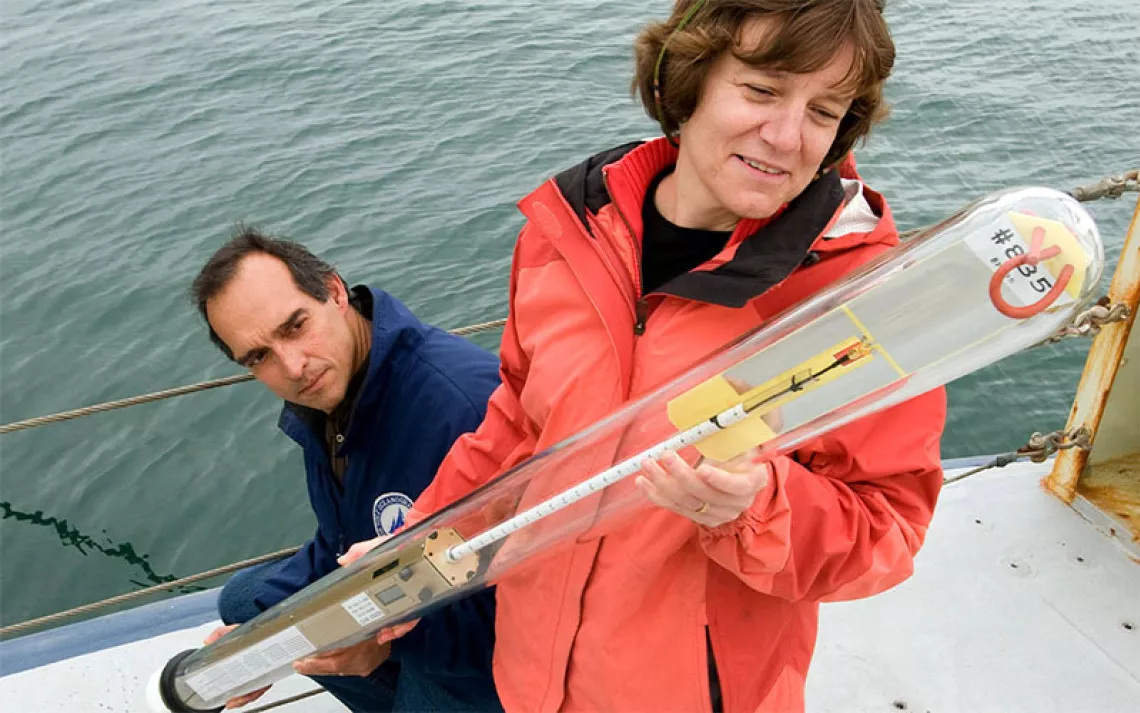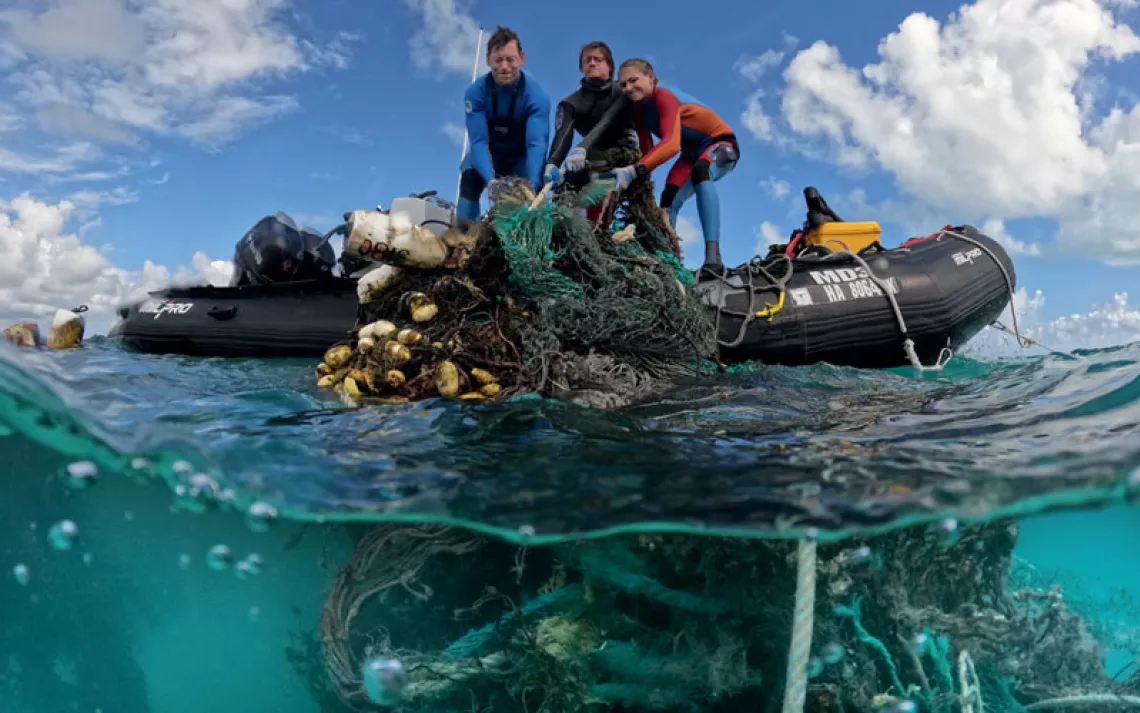Obama Creates the Atlantic Ocean’s First Marine National Monument
The Northeast Canyons and Seamounts Marine National Monument will be a haven for cold-water corals, sea turtles, and endangered whales

Cup corals and bubblegum corals can be found in the canyons. | Photo courtesy of NOAA
Today, President Barack Obama created the first U.S. national monument in the Atlantic Ocean with the designation of the Northeast Canyons and Seamounts Marine National Monument.
The 4,913-square-mile reserve lies approximately 150 miles off the coast of Cape Cod and features at least three massive underwater canyons and four giant underwater seamounts. Some of the canyons are deeper than the Grand Canyon. The mountains rise higher than any mountains east of the Rockies, with the top peak towering 7,000 feet above the seafloor. Colorful cold-water corals, some the size of small trees and more than a thousand years old, decorate the canyon walls and mountain slopes. At least 73 species of the corals have been discovered there so far. The corals provide food, spawning habitat, and shelter for a number of different fish and vertebrate species. More than 320 species have been identified in the canyons, and more than 630 have been discovered near the seamounts.
“One of the most exciting things about this area of the Atlantic Ocean is that there are so many discoveries yet to be made—amazing new species, undersea areas never before seen, and insights into our natural world not yet even imagined,” says Michael Brune, the Sierra Club's executive director. “By designating the coral canyons and seamounts as a new national monument, President Obama is giving this part of the ocean a fighting chance to continue to thrive in the face of a warming climate.”
The protected area is a haven for a wide variety of sea life. Deep, cold upwellings of nutrient-rich water climb the canyons and seamounts and provide food to plankton, squid, and mackerel. Schools of the small creatures become food for bigger creatures. North Atlantic right whales up to 50 feet in length feed on tiny zooplankton and copepods from late spring through August. In the winter, large colorful seabirds called Atlantic puffins dive up to 200 feet down to snack on fish. Giant bluefin tuna also frequent the area. Their poppy-seed-size larvae have been found floating in the water, indicating the sea here may serve as a mating ground for the giant fish.
Protection of the canyons and seamounts will eliminate the threats of drilling, mining, and some fishing. Marine mammals won’t have to contend with seismic surveys in the waters and the accompanying noises. Slow-growing, cold-water corals won’t be destroyed by mining activities, damage that could take hundreds to thousands of years to rebound from. With other threats taken out of the equation, life in the reserve may be better able to deal with rising ocean temperatures in the Northeast, which are projected to warm close to three times faster than the global average.
A group of nonprofits, politicians, and scientists called for the creation of the monument. The National Resources Defense Council has been working to protect the area for more than a decade. In 2014, the organization compiled a video of NOAA footage showing creatures found in the area, from corals and nudibranchs to swordfish and a Greenland shark. Last year, scientist Dr. Sylvia Earle of Mission Blue designated the area, along with the nearby Cashes Ledge off the coast of Maine, as a Hope Spot, a special marine area worthy of protection. On August 4, Senator Richard Blumenthal of Connecticut sent a letter to the president asking for the designation of the monument. “The New England Coral Canyons and Seamounts area, a pristine hotspot of diverse and fragile wildlife and habitats, is deeply deserving of this designation, and we urge you to employ your authority under the Antiquities Act to protect this area,” he wrote.
More than 300,000 people sent messages to the president in support of the creation of the monument. His decision to create the new reserve in the Atlantic follows his move last month to create the largest marine protected area in the world, when he expanded the Papahānaumokuākea Marine National Monument off Hawaii to 582,578 square miles. Today’s decision to create the new monument was announced at the third-annual Our Ocean Conference in Washington, D.C., where more than 20 attending countries are expected to announce the creation of 40 marine protected areas totaling nearly 460,000 square miles of ocean. The creation of these reserves comes just a week after a majority of NGOs and countries at the World Conservation Congress voted to protect at least 30 percent of the world’s oceans.
“If we are going to protect and restore our oceans, and rely on them as a source of food and enjoyment even as pressures and threats mount, the type of bold, trailblazing action that the president took today is exactly what we need,” wrote Brad Sewell, the director of fisheries and Atlantic Ocean issues for NRDC. “In particular, we need to build ecological resilience and protect genetic diversity to insulate marine populations against climate change and ocean acidification.”
 The Magazine of The Sierra Club
The Magazine of The Sierra Club







